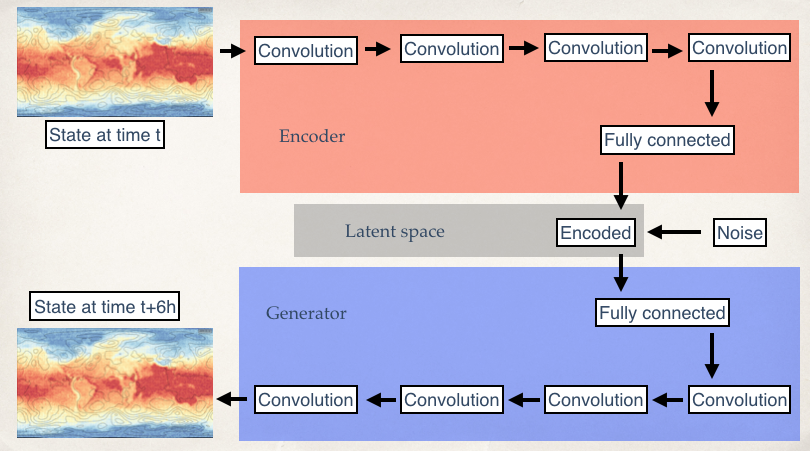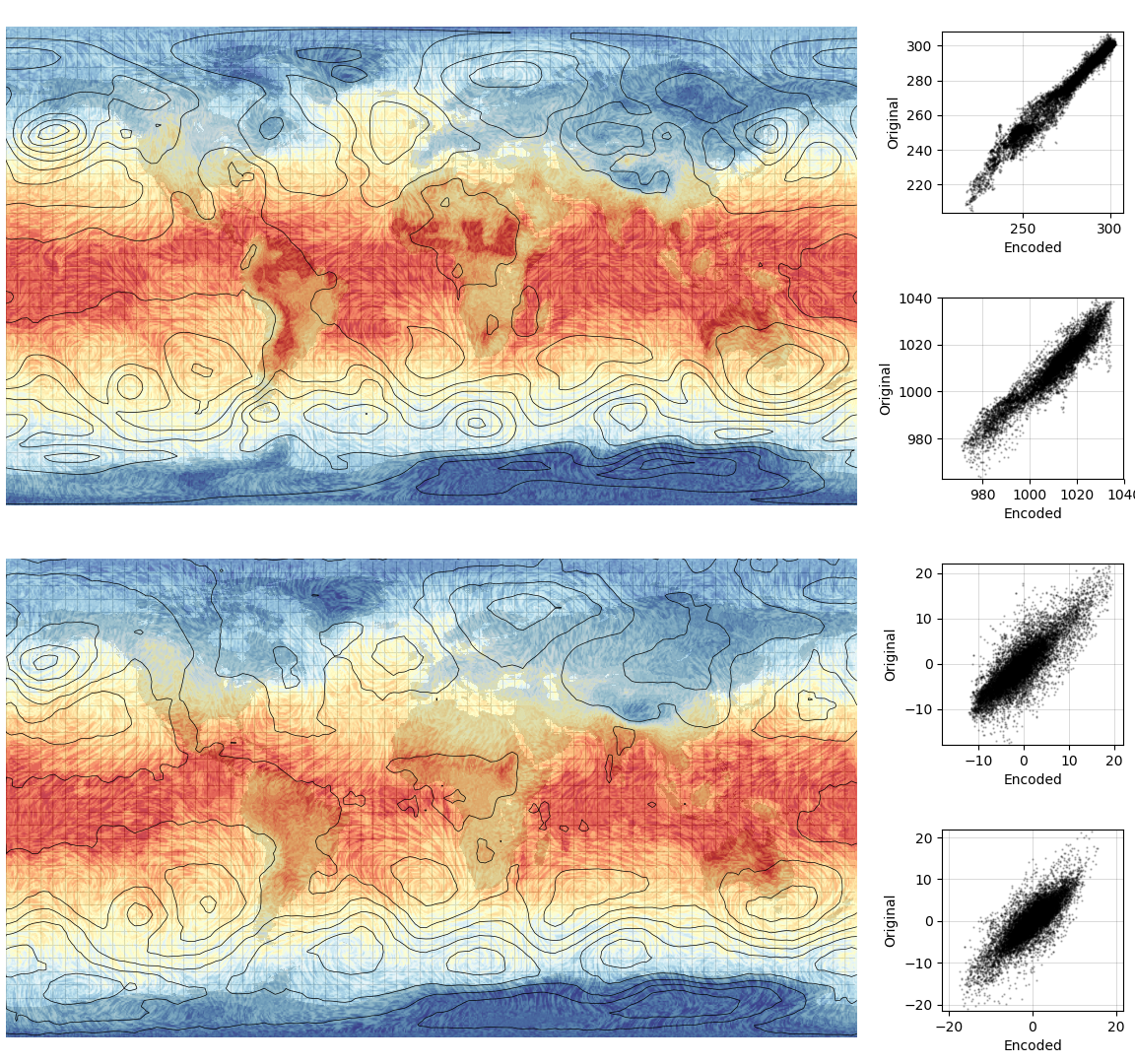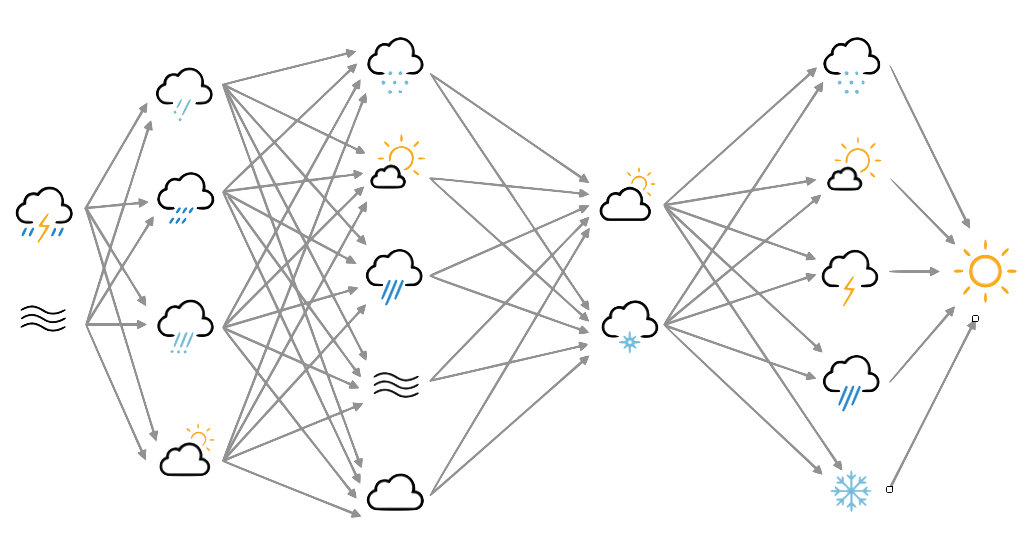A 6-hour forecast model based on 20CR¶
The autoencoder generator is a way to make new weather states, but a GCM needs to make a sequence of related new states. A very straighforward way to do this is to re-purpose the autoencoder to generate the weather 6 hours ahead of the input state, instead of re-generating the input state.

Model structure for the forecast model (Source code).
This is exactly the same model, and same code, as the autoencoder, the only change is in the training data: I am using the field at time t as the source, and the field at time t + 6 hours as the target, where the autoencoder used the field at time t for both. (Also, I have reduced the amount of noise added in the regularisation step, as this makes it work better - I don’t know why this is.)
The validation process for this predictor model is the same as for the autoencoder - compare generated prediction with the actual field at +6 hours:

Validation of the forecast model. Top panel: T2m, mslp, u and v winds in the original 20CRv3 (at one point in time). Botom panel: same, but after autoencoding. The four scatter-plots compare orignal and encoded values for the four variables. (Validation source code).
